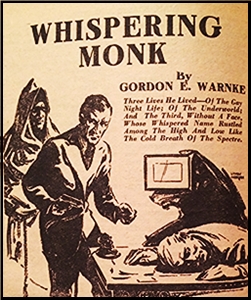Mon 14 Jan 2019
A Movie Review by Jonathan Lewis: THE RED DANUBE (1949).
Posted by Steve under Films: Drama/Romance , Reviews[6] Comments
THE RED DANUBE. MGM, 1949. Walter Pidgeon, Ethel Barrymore, Peter Lawford, Angela Lansbury, Janet Leigh, Louis Calhern, Melville Cooper. Based on the novel Vespers in Vienna, by Bruce Marshall. Director: George Sidney.
For a movie that’s ostensibly about the power of faith to brighten one’s life even in the darkest of times, there’s a surprisingly dark side to MGM’s The Red Danube. Adapted for the big screen from Scottish Catholic novelist Bruce Marshall’s Vespers in Vienna (1947), the movie is fundamentally a character study of one man’s struggle with, and journey toward, Christian faith. But in the midst of that journey there is collateral damage inflicted on another character, and it’s the film’s treatment of that tragic character that left a bitter taste in my mouth.
Let me explain. Walter Pidgeon portrays a British Army Colonel by the name of Nicobar. Stationed in Rome at the close of the Second World War, Nicobar works closely with three other staff members. There’s the dashing and womanizing Major Twingo (Peter Lawford), the highly efficient, but insecure Junior Commander Audrey Quail (Angela Lansbury), and the goofy Private David Moonlight (Melville Cooper).
They’re so close that they’ve developed their own rendition of the English nursery rhyme “Row, Row, Row Your Boat,†a song they sing while in the car to Vienna where they are about to begin their next posting. Their task in that city is to liaison with the Soviet occupiers and help them repatriate Soviet citizens back to Russia. A problem arises when Twingo (Lawford) falls in love with Maria (Janet Leigh), a beautiful and mysterious Austrian ballet dancer. As it turns out, she’s not an Austrian at all. Rather, she’s a Volga German, a Soviet citizen of German descent who the Soviets want back.
As the film is based on a Bruce Marshall work, it’s no surprise that Catholic themes would play a predominant role in the plot. Nicobar may be a good officer, but he’s not a good Christian. In fact, he’s bordering on atheism. It’s quite a shock to his system when he and his team are billeted in Vienna at a convent. Soon enough, he’s butting heads with the outspoken Mother Superior (Ethel Barrymore), whose anti-communism is never once in doubt. She hates the godless Reds and isn’t afraid of offending anyone, particularly those Soviet officers who want to repatriate Maria Buhlen back to the Soviet Union.
The movie soon devolves from what might have become a Cold War thriller into a religious melodrama. Nicobar is forced to choose between his duty to the Army and his conscience. Should he forcibly repatriate Maria back to Russia against her will, or should he listen to his nascent Christian conscience and find a way to allow her to stay in Austria? Mother Superior, to no one’s great surprise, wants him to answer to a power higher than that of His Majesty’s Government; namely, Pope Pius XII.
So what of the ugliness that I spoke of at the very beginning? (PLOT ALERT) Well, it’s in how the film ultimately treats Janet Leigh’s character. By far, she’s the most innocent and the least political. Furthermore, we have no idea what her religious beliefs – if any – are. When a bureaucratic nightmare lands her back in Vienna and almost in the hands of the Soviets, she attempts suicide by defenestration.
Although she doesn’t die immediately, she ultimately succumbs to her wounds. Mother Superior seems more concerned than anything that Maria committed a mortal sin in her suicide attempt and only has moments to plead for forgiveness before passing away. Twingo decides that he will be able to go on living despite her death.
And because the United Nations ultimately ends the forced repatriation of Soviet nationals, Nicobar’s faith is ultimately restored, pleasing Mother Superior to no end. As the movie ends, Nicobar and his crew are singing “Row, Row, Row Your Boat†as they begin their journey to their next assignment in England. Maria, I imagine, was not on their minds.
Don’t get me wrong. There are some good moments in The Red Danube. The acting and cast are top notch. But there’s not much in George Sidney’s direction to distinguish the movie from so many other forgettable dramas from the period, and the plot is too overtly political for its own good. Other films dealing with Soviet tyranny such as Night People (1954) (reviewed here) stand the test of time far better than this dated feature.
